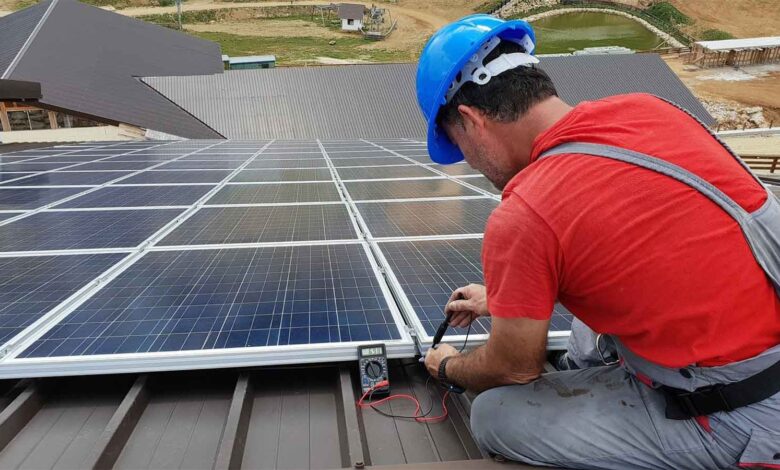Why Project Management is the Backbone of Successful Solar Installations

The solar industry has never been more promising, or more unforgiving.
In 2025 alone, the U.S. added over 8.6 GW of new solar module manufacturing capacity. Installation costs are down 8% year-over-year, and customer demand continues to rise. But while solar hardware becomes more accessible, the operational side tells a different story. Permitting remains slow, interconnection varies by jurisdiction, and field coordination is often reactive.
And the pressure is mounting. Soft costs, including labor, paperwork, and project delays, now account for up to 65% of a residential solar system’s total price. That means even small inefficiencies on the ground can offset any margin gains made through volume or pricing.
To stay competitive in this environment, execution (not just strategy) must improve. And that starts with how solar projects are managed day to day with the help of field service management software that centralizes scheduling, tracks field teams in real time, and standardizes workflows across installs.
Where Solar Projects Fall Apart
The technical design may be solid. The equipment may be advance. But if operations aren’t tightly managed, solar projects stall.
Here’s where breakdowns typically occur:
- Reactive Scheduling
Without a centralized view of technician availability, permit status, or inspection deadlines, delays are unavoidable and costly.
- Permit & Utility Delays
Jurisdictional rules differ widely. When permit submission and approval aren’t tracked in a system, timelines slip unnoticed.
- Field & Office Disconnect
Teams use different tools, or none at all. Progress updates are delayed, issues escalate slowly, and decisions are made with incomplete information.
- Lack of Accountability
Without real-time documentation or performance tracking, identifying what went wrong, or where, takes longer than the fix itself.
- Budget Erosion
Labor overages, idle crews, and rework quietly eat into margins, but the financial impact often surfaces after the fact.
These aren’t edge cases but serious structural inefficiencies that repeat across jobs. And yet many solar firms still rely on spreadsheets, messaging apps, and siloed tools to coordinate six-figure installations.
The Role of Field-Centric Project Management in Solar
Solar project management software is about operational control. Unlike traditional project tools that focus on Gantt charts or task lists, solar project management must deal with mobile crews, unpredictable variables, and jurisdictional dependencies. That requires systems built not just for planning, but for execution in the field.
A robust field project management solution supports:
- Centralized Scheduling
All moving parts, like site surveys, engineering, permit approvals, and install crews, are scheduled within a single system, giving operations teams real visibility and control.
- Live Progress Tracking
Field teams update job status, log time, and document work in real time via mobile apps. That means project managers no longer rely on end-of-day emails or verbal updates.
- Workflow Visibility
Dependencies and delays are flagged as they happen, not when a customer follows up asking why the install hasn’t started.
- Controlled Budgeting
Time spent on-site, change orders, and material consumption are captured on the job, giving finance teams current (not historical) data to work with.
- Coordinated Communication
Role-based access ensures subcontractors, inspectors, and customer success teams all stay informed without getting overwhelmed with irrelevant details.
This level of structure creates a measurable impact that translates into fewer delays, improved field productivity, and reduced soft costs per install.
Choosing the Right Solar Project Management Platform
The right software organizes work and transforms how teams operate. For solar companies, that means selecting a workflow automation software that does more than track tasks. It must actively support field-driven workflows.
Look for a platform that offers:
- Dynamic Scheduling: Drag-and-drop calendar views with technician filters (skills, availability, location) that update in real time as projects shift.
- Custom Job Templates: Standardized task sequences for residential, commercial, and battery installs, including permit tracking, inspections, and site walk-throughs.
- Mobile Field Access: Real-time visibility for field teams. Tasks, forms, site notes, service reports, and checklists accessible via mobile, online or offline.
- Digital Documentation: Replace clipboards and PDFs with structured digital forms, photo uploads, time tracking, and customer signatures.
- Automated Customer Notifications: Send real-time ETAs, appointment confirmations, and progress updates to reduce call volume and improve experience.
- Real-time Reporting: Dashboards that reflect project status, technician utilization, permit delays, and average time to completion, without manual data entry.
These are not add-ons but necessary steps for maintaining profitability and performance in a field-intensive industry.
Why This Matters Right Now?
Installation prices may be falling, but they aren’t falling for everyone. The difference between high- and low-cost operators increasingly comes down to execution. And complexity is only increasing. The success of a solar project doesn’t end with system activation. For many businesses, it’s just the beginning of a longer revenue relationship (through maintenance contracts, system upgrades, battery integrations, or EV charger installs).
And the frontline for these future opportunities is the field team.
According to industry data, 82% of organizations now rely on mobile workers to upsell services during or after a job. But those upsell conversations are far more effective when the install process has been smooth, professional, and well-documented. When the technician shows up on time, knows the job history, and leaves behind a clear digital summary, the customer is more likely to trust them and more open to future conversations.
Solar operations software that combines field service tracking with customer communication helps make this possible. With Field service management software, follow-ups are automated, service history is preserved, and techs have the context they need to recommend the next step confidently. That turns project delivery into repeated sales and a consistent brand experience on-site. Otherwise, without structured project oversight, these expectations turn into operational risk.
Conclusion
Most solar companies fail because of poor coordination. When field execution and project oversight operate in silos, things get missed, margins shrink, and growth stalls.
Field-ready project management systems are how solar companies close that gap. They offer the infrastructure to manage installations with clarity, consistency, and accountability, no matter how big the number of jobs you manage a month.
In an industry where time is money and visibility is power, strong project management is the framework that keeps solar installations on track, aligned, and profitable.



